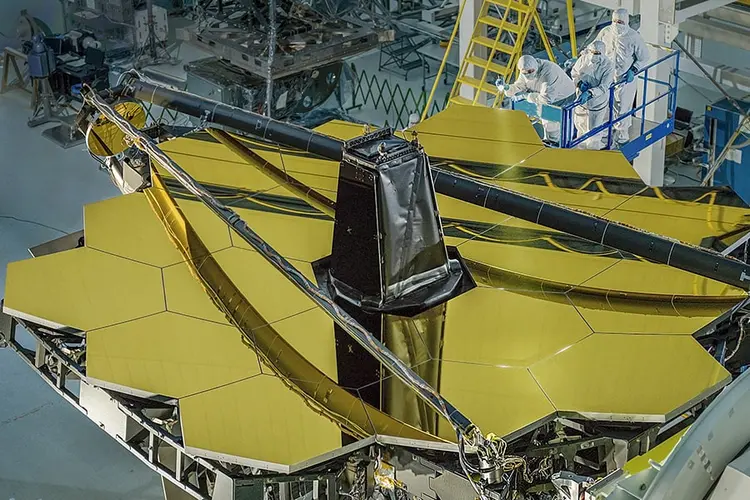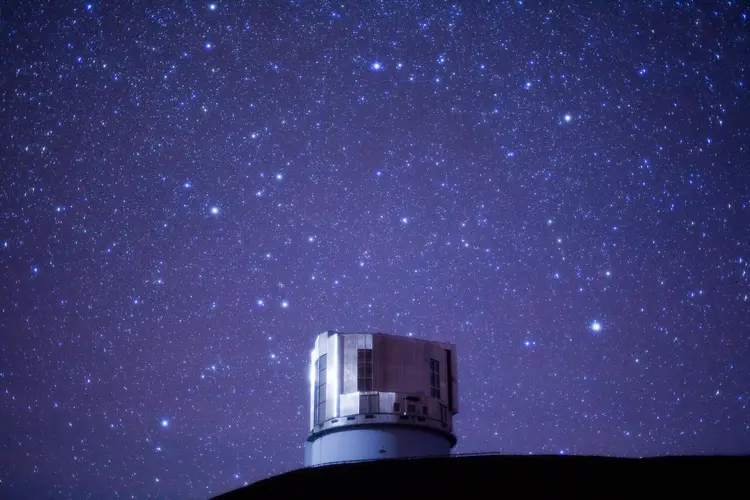
New Study Identifies the Origin of the Persistent Emission of Fast Radio Bursts
Media Inquiries
An international team of scientists, including a researcher at Carnegie Mellon University's McWilliams Center for Cosmology and Astrophysics(opens in new window), has discovered the origin of a persistent radio emission observed alongside a fast radio burst.
The new study, led by the Italian National Institute for Astrophysics(opens in new window) (INAF), reveals that the radiation is generated by a bubble of plasma. The data also allow researchers to constrain the nature of the "engine" powering these mysterious sources. The results are published in Nature(opens in new window).
Fast Radio Bursts (FRBs) are one of the most recent open mysteries of astrophysics. Within a few milliseconds, these powerful events release an immense amount of energy, among the highest observable in cosmic phenomena. FRBs were discovered just over 10 years ago, but their origin is still uncertain.
In very few cases, the rapid flash that characterizes FRBs coincides with a persistent emission, which is also observed in the radio band. The new study has recorded the weakest persistent radio emission ever detected for an FRB so far. The subject of the study is FRB 20201124A, a fast radio burst discovered in 2020 whose source is located about 1.3 billion light-years away.
The observations were performed with the most sensitive radio telescope in the world, the Very Large Array (VLA) Radio Telescope(opens in new window) in New Mexico. The data enabled scientists to verify the theoretical prediction that a plasma bubble is at the origin of the persistent radio emission of FRBs.
"We were able to demonstrate through observations that the persistent emission observed along with some fast radio bursts behaves as expected from the nebular emission model, i.e. a bubble of ionized gas that surrounds the central engine," explained Gabriele Bruni, INAF researcher in Rome and lead author of the new paper. "In particular, through radio observations of one of the bursts that is nearest to us, we were able to measure the weak persistent emission coming from the same location as the FRB, extending the radio flux range explored so far for these objects by two orders of magnitude."
This research also helps narrow down the nature of the engine powering these mysterious flashes. According to the new data, the phenomenon is based on a magnetar (a strongly magnetized neutron star) or a high-accretion X-ray binary, i.e. a binary system consisting of a neutron star or black hole, accreting material from a companion star at very intense rates. In fact, winds produced by the magnetar or the X-ray binary would be able to "blow" the plasma bubble, giving rise to the persistent radio emission. There is therefore a direct physical relationship between the engine of FRBs and the bubble, which is located in its immediate vicinity.
The motivation for this observing campaign stems from another work led by Luigi Piro of INAF, which also involved Brendan O'Connor, a McWilliams Postdoctoral Fellow at Carnegie Mellon. The two are co-authors of the new paper. In their earlier work, the researchers had identified the persistent emission in this FRB's host galaxy, but they had not yet measured the position with sufficient precision to associate the two phenomena. In the new work, the researchers used higher spatial resolution data from the VLA, the Northern Extended Millimeter Array(opens in new window) (NOEMA) and the Gran Telescopio CANARIAS(opens in new window).
"There was new data taken at radio wavelengths that had a better angular resolution than earlier studies," O'Connor said. "It's essentially like are you looking at something in 1080p instead of 720p. And in this case, the higher resolution image allows us to better localize what's going on with this source."
Using the new data, O'Connor carried out a spectral energy distribution (SED) analysis of the host galaxy to infer its properties, such as mass and star formation rate. An SED plots out the different amount of energy emitted at each wavelength of light, which can reveal these properties. In this case, O'Connor's analysis helped determine that the persistent radio emission is inconsistent with coming from a star-forming region within the host galaxy.
"The high-resolution data tells you, one, it's not spread out over a large region of the host galaxy, which you would expect for star formation. And two, it lets you constrain the actual size of the source," O'Connor said. "And based on the inferred size, it fits the overall picture of what's expected for a magnetar nebula."
Most FRBs do not exhibit persistent emission. Until now, this type of emission had only been associated with two FRBs, both of which had a low brightness that did not allow for verifying the proposed model. FRB 20201124A, instead, is located at a large but not excessive distance, which made it possible to measure the persistent emission despite its low brightness. Understanding the nature of the persistent emission allows researchers to add a piece to the puzzle about the nature of these mysterious cosmic sources.
Along with INAF researchers, the collaboration involves the Universities of Bologna, Trieste and Calabria, in Italy, and the international participation of research institutes and universities in China, the United States, Spain and Germany.



